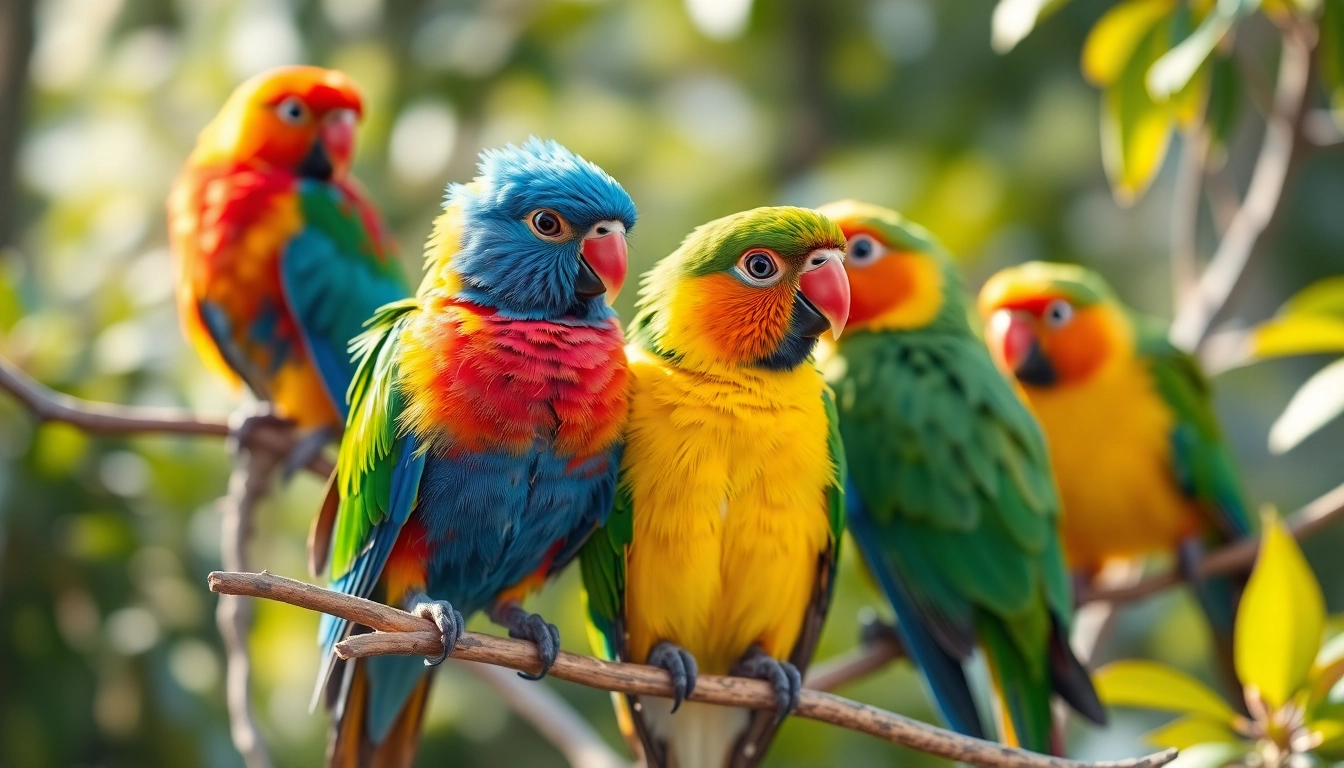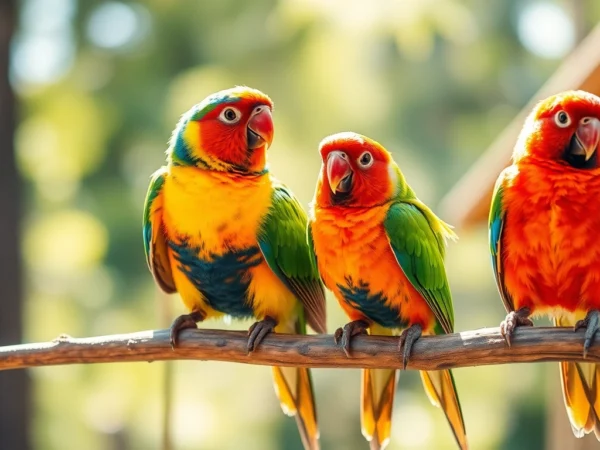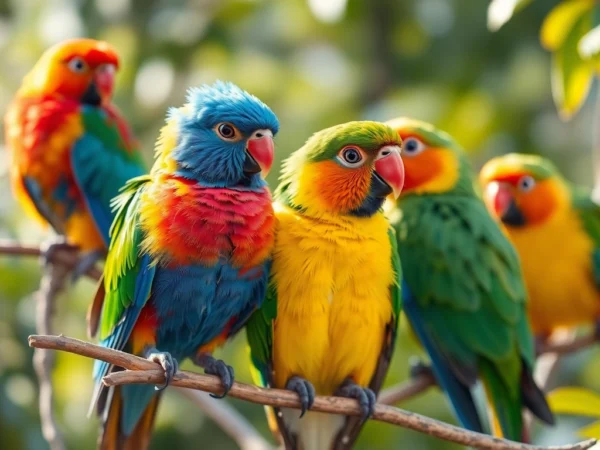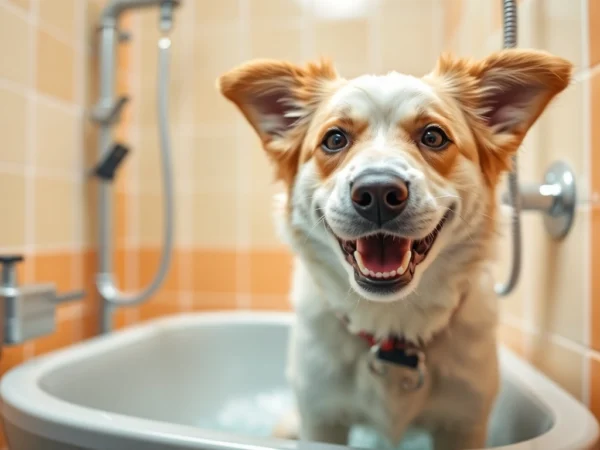The Guide to Choosing the Right Pet Birds for Your Home
Understanding Different Types of Pet Birds
Embarking on the journey to become a pet bird owner is an exciting adventure filled with diverse choices, each species offering unique characteristics, care requirements, and compatibility with your lifestyle. Whether you’re a beginner seeking a low-maintenance companion or an experienced avian enthusiast looking for exotic diversity, understanding the different types of pet birds is essential for making an informed decision. From small, easily manageable species like budgerigars to majestic macaws that captivate with their grandeur, the world of pet birds is vast and varied. For those just starting, exploring popular beginner-friendly species can ease the transition into responsible pet ownership, ensuring both the bird’s well-being and your enjoyment.
To suit your specific needs, preferences, and living conditions, it’s vital to comprehend each bird’s size, lifespan, behavioral traits, and care needs. This comprehensive overview aims to guide you through the array of options available, emphasizing the importance of choosing a pet bird that aligns with your environment and experience level.
Popular Beginner-Friendly Species
For newcomers to avian caregiving, several species stand out due to their manageable size, gentle demeanor, and adaptability to household routines. The pet birds most recommended for beginners include budgerigars (commonly known as budgies), cockatiels, and lovebirds. These birds are not only affordable but also relatively easy to care for, making them ideal first-time pet owners.
- Budgerigars (Budgies): Tiny parrots originating from Australia, budgies are highly social, intelligent, and capable of mimicking simple sounds. They typically live 5-10 years but can reach up to 18 with proper care.
- Cockatiels: Known for their expressive crests and affectionate nature, cockatiels thrive on social interaction and can form strong bonds with their owners. They generally live 15-20 years.
- Lovebirds: With their vibrant plumage and playful personalities, lovebirds are small parrots that are easy to handle and require moderate care. Their lifespan averages 10-15 years.
Unique and Exotic Bird Options
If you seek a more distinctive or visually striking pet, the world of exotic birds offers a range of species that bring beauty and fascination into your home. These birds often demand a higher level of care, attention, and environmental enrichment but reward owners with their extraordinary appearances and personalities.
- Hyacinth Macaws: The largest flying parrots, renowned for their deep blue feathers and impressive size. They can live up to 50 years and require spacious cages, social interaction, and specialized diet.
- Cockatoos: Known for their impressive crests and affectionate nature, cockatoos are intelligent but may exhibit screaming or destructive behaviors if insufficiently stimulated.
- Parrotlets: Small but fierce, these tiny parrots are surprisingly resilient and intelligent, making them perfect for owners with limited space who still want a bird with personality.
Size, Lifespan, and Care Requirements
Understanding size and lifespan is fundamental in selecting a pet bird that fits your capacity for long-term commitment. Smaller species like finches and budgies tend to have shorter lifespans, usually between 5 to 10 years, but they are easier to care for and require less space. Larger parrots, such as macaws and cockatoos, can live 50 years or more, demanding a significant investment in time, space, and resources.
Care requirements hinge upon the species. While some birds thrive on seed-based diets supplemented with fresh fruits and vegetables, others require specialized pellets and tailored enrichment activities. Larger birds often need larger cages, more social interaction, and mental stimulation to prevent behavioral issues. Conversely, smaller species might be kept in compact cages but still require daily socialization and mental engagement to stay healthy and happy.
Key Factors in Selecting Your Ideal Pet Bird
Compatibility with Your Lifestyle
Matching a bird’s behavioral and care needs with your lifestyle is crucial. Busy professionals or frequent travelers might prefer low-maintenance species like finches or certain Poicephalus parrots, which are more independent and can tolerate being left alone for longer periods. Conversely, if you enjoy interactive and social pets, species such as cockatoos or African greys might be more suitable, provided you can commit ample time daily for interaction.
Space, Noise, and Maintenance Considerations
Space availability significantly influences your choice. Larger parrots require spacious cages and dedicated flight areas, whereas smaller birds like canaries and finches need minimal room. Noise levels also vary—a lovebird or cockatoo may be quite vocal, which could be disruptive in apartment living, while finches are relatively quiet. Maintenance involves cleaning cages, providing fresh food and water, and routine health checks. Budgeting for ongoing supplies like perches, toys, and cleaning tools is essential to maintain a healthy environment.
Budget and Initial Setup
Initial costs extend beyond the bird’s purchase price. Setting up a suitable habitat involves purchasing a cage, perches, toys, feeding dishes, and climate control accessories. Expect to spend several hundred dollars initially, with ongoing expenses for food, vet visits, and replacement toys. Budget-conscious options like budgerigars or finches are affordable and provide excellent starter experiences but invest in quality equipment and nutritious diet to ensure your bird’s well-being.
Essential Care and Responsibility for Pet Birds
Feeding, Nutrition, and Enrichment
Proper nutrition forms the cornerstone of healthy bird ownership. A balanced diet combining high-quality pellets, fresh fruits, vegetables, and occasional seeds prevents nutritional deficiencies. For example, parrots such as macaws and cockatoos require diverse diets rich in vitamins, minerals, and healthy fats. Enrichment includes engaging toys, foraging activities, and social interaction—vital for mental stimulation and preventing boredom-related behaviors like feather plucking.
Housing, Hygiene, and Safety
Housing must meet the specific needs of your bird’s size and activity level. Stainless steel or high-quality cage bars, ample space, and easy-to-clean surfaces facilitate hygiene. Regular cage cleaning, including sanitation of food and water dishes, is necessary to minimize disease risks. Safety involves avoiding hazards like toxic plants, fumes, or open water sources. Ensure your bird’s environment is secure and only accessible to safe items.
Recognizing Health Issues and When to Seek Vet Care
Early detection of health problems is crucial. Signs such as lethargy, feather plucking, loss of appetite, abnormal droppings, or respiratory distress warrant prompt veterinary consultation. Regular check-ups with an avian veterinarian who can perform health screenings, parasite control, and nutritional assessments are recommended to prolong your bird’s longevity and quality of life.
Training, Socialization, and Building Bond with Your Bird
Basic Training Techniques
Training enhances your bird’s social behavior and aids in handling. Gentle, positive reinforcement methods—using treats, voice commands, and consistency—are most effective. Start with simple commands like step-up and gradually progress to more complex tricks. Patience and regular routines establish trust and facilitate smoother interactions.
Creating Enriching Interactions
Enrichment involves providing varied toys, foraging opportunities, and safe space to explore outside the cage. Engaging your bird in daily play sessions or training exercises promotes mental stimulation and prevents behavioral issues. Customizing toys to match the bird’s size and preferences maximizes engagement and longevity of interest.
Understanding Bird Behavior and Body Language
Reading your bird’s body language helps you gauge its comfort and stress levels. Relaxed birds often exhibit fluffing feathers, preening, or gentle vocalizations, while signs of distress include biting, biting, or wing-spreading. Understanding these signals allows you to respond appropriately, fostering a harmonious relationship built on trust and mutual respect.
Long-Term Commitment: Ensuring a Happy Life for Your Pet Birds
Longevity and Aging Care
Many pet birds, especially larger species, have long lifespans, necessitating a lifelong commitment. As they age, birds may develop health issues requiring specialized care. Adjusting diet, providing gentle handling, and ensuring comfortable living conditions are essential components of aging care. Maintaining regular vet visits and monitoring behavioral changes can facilitate early intervention and comfort during their senior years.
Adoption Options and Ethical Considerations
Adopting a rescued bird or purchasing from reputable breeders supports ethical stewardship and reduces demand for wild-caught specimens. Evaluate your capacity to meet the specific needs of your bird before adoption. Educate yourself about the responsibilities involved and avoid supporting unethical practices like illegal trapping or irresponsible breeding.
Resources for Ongoing Learning and Support
Continuous education through books, online forums, local bird clubs, and avian veterinarians enhances your ability to care responsibly and adapt to your bird’s changing needs. Joining community groups can also provide emotional support, training tips, and health guidance, creating a rewarding avian companionship experience.





